Contributing Writer
White Glove Delivery Allows Trucking Companies to Increase Services
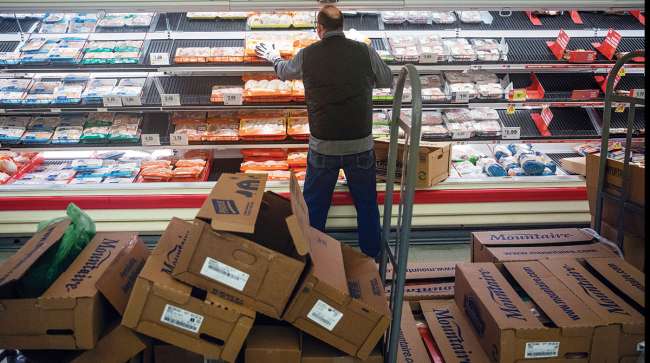
[Stay on top of transportation news: Get TTNews in your inbox.]
The COVID-19 pandemic and its lingering effects have forced some innovations in the industry, including in the last-mile delivery segment. In that segment, the service of “white glove” delivery has become a viable growth center for trucking companies. With that growth potential, logistics companies have explored the last-mile space to add white glove delivery services in which the delivery team unpacks and assembles items.
Last-mile delivery has proven to be a fixture for most homes in North America, with a market size valued at over $40 billion in 2021. With the boost of e-commerce through many segments like heavy equipment and food delivery, some analysts say the last-mile segment is expected to grow by more than 13% annually.
White glove delivery companies offer a wide range of specialized customer services, depending on their needs. Many of the services are customized for the specific customer and situation. The intended marketing message is that white glove service goes above and beyond standard delivery. Although the term “white glove” may conjure up images of a butler, it is more wide ranging in the types of services that can be provided.
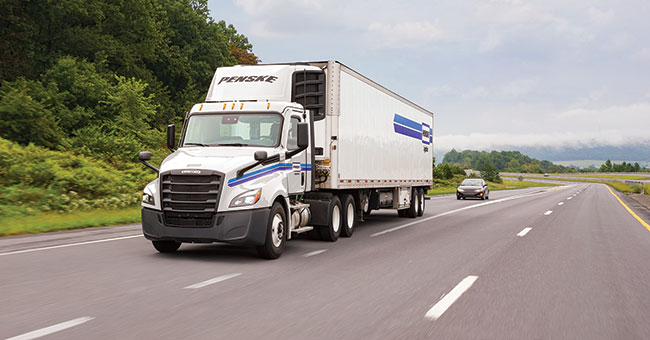
A Penske reefer on the road. Penske regionally cross-trains its drivers because of the specialized nature of the services. (Penske)
Jeff Jackson, executive vice president of operations for Penske Logistics, said his operation deals in “final B2B mile” with a significant portion of service in the food and beverage, and grocery industries.
“For us, it is difficult deliveries where you’re on a hand truck, maybe walking through a shopping mall or there are tough physical conditions to navigate,” he said. “We have a customer where we’ll throw away doughnuts and bring them fresh ones at a gas station. We do that while they’re open. They are great customers, and we deliver to 1,000 stores a night.”
Jackson says that Penske also delivers medical equipment and supplies to hospitals with white glove service. He noted many hospitals don’t have the inventories they previously did. So many of the deliveries are just in time.
“We may deliver to four different delivery points within a hospital,” Jackson said. “We’ll make one delivery to the surgery center, the ICU and maybe the ER. We could be in the hospital for more than a couple of hours.”
Another characteristic of white glove is the logistics — the more complex, the more premium the service. For example, delivering fresh food and stocking a convenience store while it is open frees up that customer’s staff to focus on customer service. That, according to Jackson, is one way to differentiate a white glove delivery from a standard bump-in dock delivery.
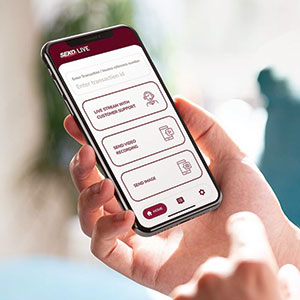
Seko Live connects drivers, technicians and customers with live support.
(Seko Logistics)
Brian Bourke, chief growth officer with Seko Logistics, says they’ve been providing white glove services for several decades. However, they continue to evolve and expand as requirements change. Bourke noted some of the most recent improvements have been in technology for field service and support.
“We’ve launched a new technology called Seko Live that gives us the ability to connect drivers, technicians and customers into live support with experts on a certain product or feature with video streaming on demand,” he said.
Penske’s Jackson says that the driver shortage was exacerbated by COVID-19 and the supply chain constraints and challenges. The trucking company had a significant amount of compression in the wages from basic driving duties to the more laborious white glove work.
“It’s tough physical work, typically. So there’s premium pay,” he said. “We’ve had to go back and jump drivers up, but we had significant challenges with high-touch white glove recruiting in the first year of COVID-19. However, our group has gotten the wages back and the compression issue more under control, but it was a challenge for quite some time.”
Penske invested heavily in driver recruiting to fill the white glove positions. In January, the company had 1,400 driver openings. Penske filled more than 600 positions this year.
“[This was achieved] out of a driving force that approaches 11,000,” Jackson said. “Our comfort level with 10,000-plus drivers is maybe 500 openings or 5%. We’re approaching that, so it’s getting better. I think we’ve been more aggressive than most with wages. We’re not out of the woods by any means, but much better than it was earlier in the year.”
He added that Penske regionally cross-trains its drivers because of the specialized nature of the services.
“For example, we deliver milk to grocery stores. Milk is a challenging delivery unit to know how to deliver. And when the milk spills, you need to know what to do,” he continued. “Putting a driver in cold to deliver milk is not going to work. So we will have drivers in the surrounding areas trained to do that and then pay them a premium.”
Penske also taps what Jackson calls its “elite driver team” that travels to locations to fill in gaps. “We train them to do different things — many high-touch things like grocery, convenience foods or what have you. So you’ve got to have a backup and folks who are trained.”
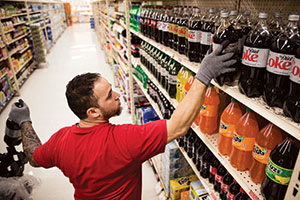
Shelves are stocked with Coke products at a Philadelphia supermarket. Trucking companies are experiencing challenges when initiating white glove services. (Matt Rourke/Associated Press)
Seko is also experiencing growth in the white glove segment, handling items from medical equipment to auto parts in the B2B space. In the consumer space, this can consist of high-value items from companies such as Walmart, Amazon and even Peloton (which recently signed over third-party white glove services to Amazon).
“The expectations from shippers are that any company should be able to perform white glove deliveries nationwide or even globally, and that can be a challenge for anyone starting out,” says Seko’s Bourke. “Additionally, delivering exercise equipment into a home or an integrated server rack into a data center are just two examples of how diversified white glove services can be, so it’s important to focus on certain aspects only depending on capability.”
Some delivery services may not fit in with white glove deliveries. Although white glove services is another avenue to increase revenue, there are many caveats. It may do more harm than good if it’s not within a company’s area of expertise or a company lacks well-trained — and well-paid — drivers to execute complex deliveries. Larger fleets have found it more viable due to their infrastructure and ability to handle and deliver complicated equipment.
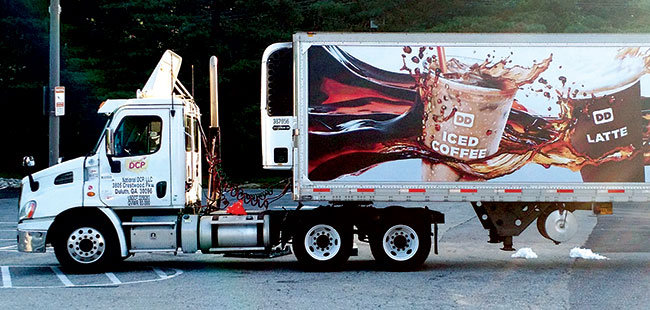
A driver makes a delivery to a Dunkin' store in Bowie, Md. (Peggy Smith/Transport Topics)
“You have to have robust training, though. You must have standing operating procedures and need process rigor and discipline to execute this because it’s complex. Not all organizations have that in their DNA or even just the resources behind them to support an operation like this with training and things as basic as the job description,” Jackson said. “There’s critical attention on these jobs. And you want the customer to know what they’re getting into.”
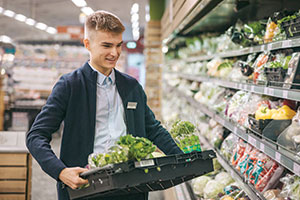
A worker stocks fresh vegetables in the produce section. (jacoblund via Getty Images)
As trucking companies are adding white glove services, they are experiencing initial challenges but there are also plenty of upsides as fleets find a niche that suits the experience level. Most consumers are more confident ordering items online, while B2B and B2C customers are becoming more inclined to have on-time deliveries to their doorstep. With last-mile deliveries rejuvenating sales for many companies, fleets are striving to meet such customer expectations in the post-pandemic era.
Even after the world has started returning to a working normal, online sales and e-commerce platforms are expected to keep their momentum in the global last-mile delivery market, while more key players are planning to use white glove services as a way to safely and efficiently reach their premium customers in niche segments.
“We’ve had significant growth in the perishable food and beverage space,” says Jackson. “And we also handle auto parts for every major OEM in the U.S. Every day, we deliver to 7,000 dealers when they’re not there. For the most part, we’re rolling in cages after hours, so we have the keys to the dealership. It’s a significant white-glove operation for us, and we’ve grown in that segment significantly over the last couple of years as well.”
Want more news? Listen to today's daily briefing below or go here for more info:



